Disclosure: Meeple Mountain received a free copy of this product in exchange for an honest, unbiased review. This review is not intended to be an endorsement.
MLEM is a push-your-luck game with straightforward rules. Every round, each player loads one of their cats onto a rocket ship, starting with the commander for that mission and moving clockwise around the table. The choice of cat matters, since each has a unique power, but we’ll come back to that.
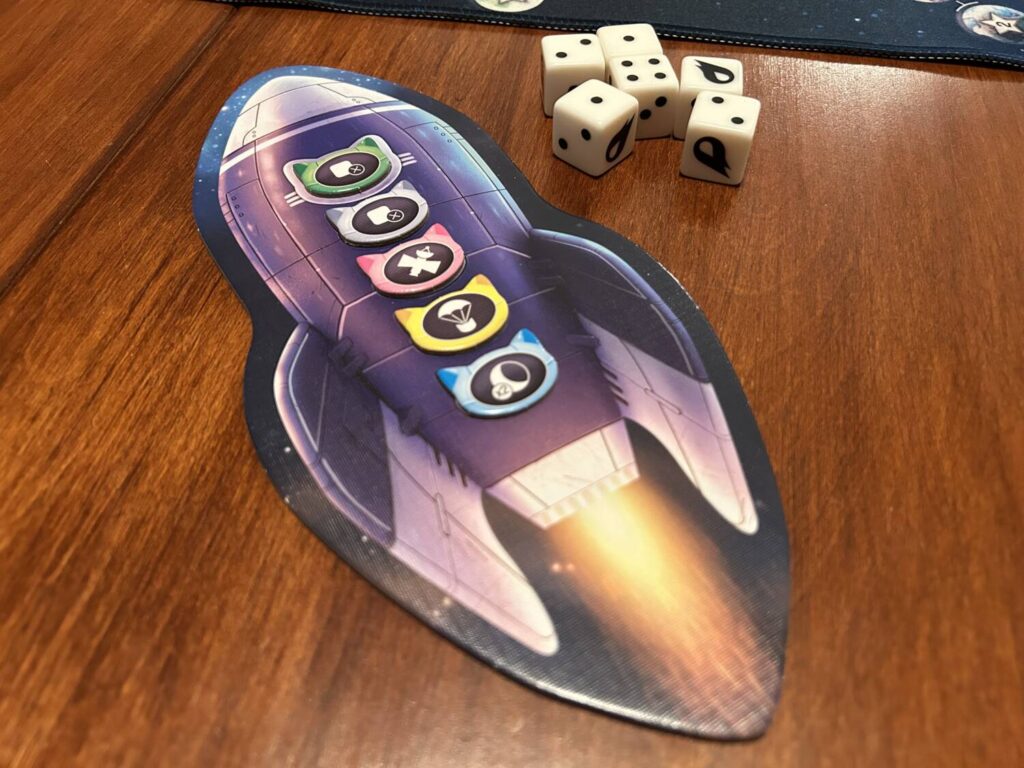
Once the rocket is fully manned, the commander gets rolling. The mission starts with six dice, rolled all at once. The results are grouped by value—all the twos together, all the threes, and so on—and the commander decides which groups get used to move the rocket forward. There are a few things to keep in mind here.
The first: the rocket moves the sum of the values of the used dice. If the commander uses two ones and a three, the rocket moves five spaces. The second: used dice are removed from the pool for the rest of the mission, and in order to use any die showing a given value, you have to use all the dice showing that value. The third and final thing: only the values shown on the rocket’s current location are eligible for use. If you roll the dice pool and come up empty on matches, the mission fails.
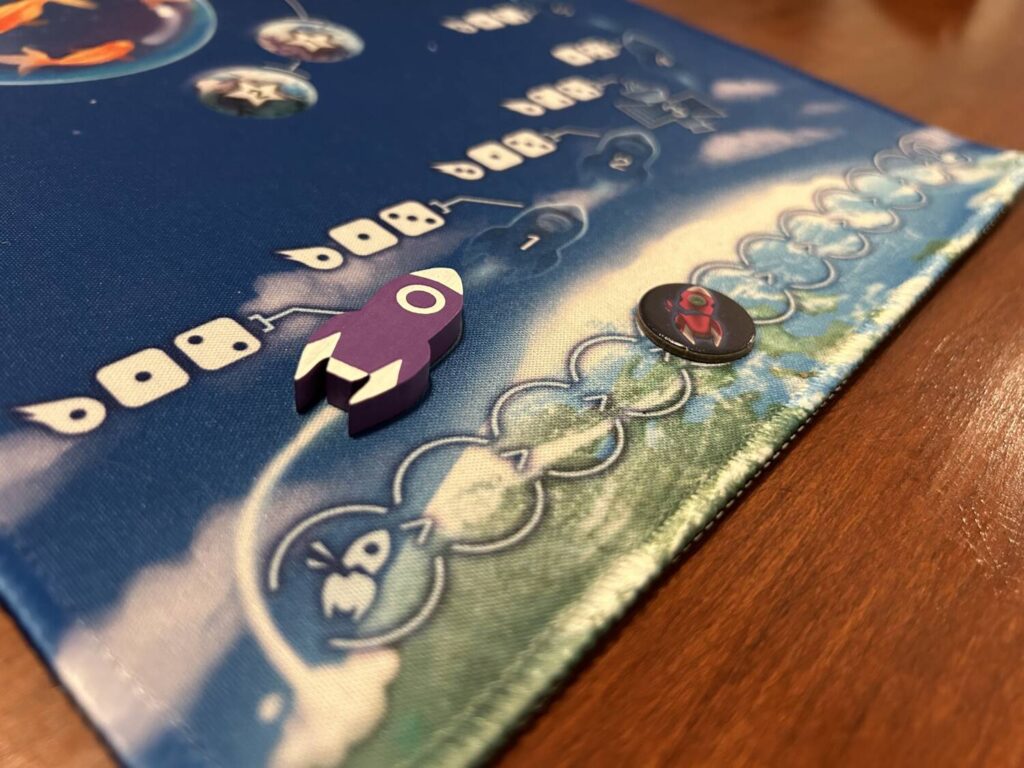
Assuming the mission doesn’t fail and the rocket moves, players then, in order, get to decide whether or not they want to disembark from the rocket. Disembarking is how you score points. Space is littered with planets and moons, and each rewards a curious catstronaut in its own way. Moons are one-time stops. The first cat on a moon gets the points shown, and that moon is unavailable for the rest of the game. Planets are majority competitions, rewarding the player with the most cat, then the second most, and so on.
Disembarking is a choice. Further up the neoprene mat, as the mission reaches deep space, the point values increase. You probably want to hang around and see if you can score a bit more. That’s a risk, though. If the mission fails, your cat doesn’t get to disembark. Don’t worry, the cat doesn’t die. They have nine lives, remember. Rather, the cat returns to your board, and can be chosen again for the next mission.
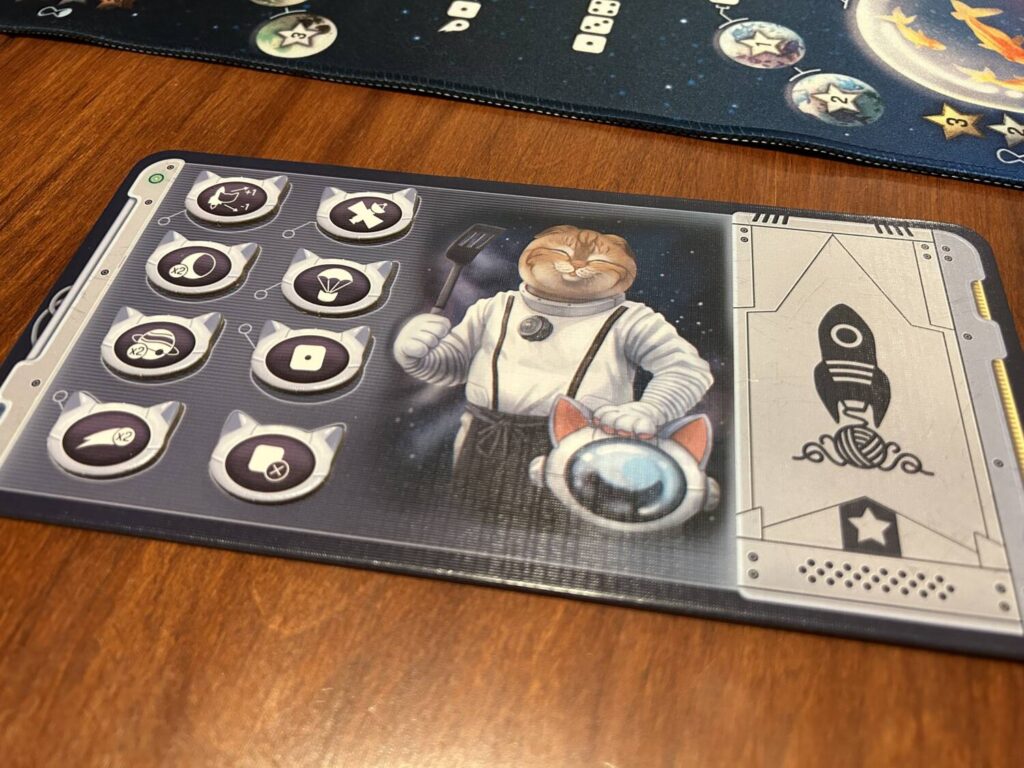
The Right Fluff
The cats are where MLEM tries something different, and they’re almost compelling enough to earn it an extra half star on the ol’ rating meter. As I mentioned before, each has a unique ability.
Three cats double your points when they disembark in the right location: one doubles the value of a moon, another a planet, and the third deep space. If you get that deep space-doublin’ cat all the way to the end of the track, you can probably rest on your laurels for the remainder of the game.
The other cats are individual, and it’s easier to list them than it is to try and make this all work within a paragraph structure. The human mind can only take so many sentences starting with “Another one.” Cats 4-8, in no particular order:
- Allows you to disembark one space ahead of or behind the rocket’s current location.
- Acts as an emergency reserve single-use die during the mission.
- Shifts the starting space for the mission three spaces up the track.
- Allows you to disembark after the mission fails.
- Removes a die from the mission pool upon disembarking.
These are interesting and clever abilities that create some subtle player interaction. Did someone add the cat that moves up the start space? May be a good mission to add your deep space doubler. Everyone else put in some doubler or another? Ambush them with the cat that removes a die. There is, for all of MLEM’s straightforwardness, some cute stuff you can do if you’re inclined.
Paws for Concern
The problem is, clever or not, MLEM fails to be particularly fun. It starts, it’s alright, and it ends—a little later than you want it to. The game has two end conditions: either one player gets all their cats out on the board, or a sufficient number of missions fail. The idea of a game in which your catstronauts die when the mission fails is viscerally displeasing, but I also can’t help but feel that such a ruleset would make for a game that plays for the amount of time MLEM really warrants.
The bag includes three different modules, which can be combined with the base game in any arrangement that suits your fancy. I had hoped that they would improve the game, but experience shows me that they are, at best, neutral. One of them, the UFO module, makes the game SO much worse, completely erasing what little sense of momentum there already was. Reiner Knizia has created some great push-your-luck titles, but MLEM, sadly, isn’t one of them.


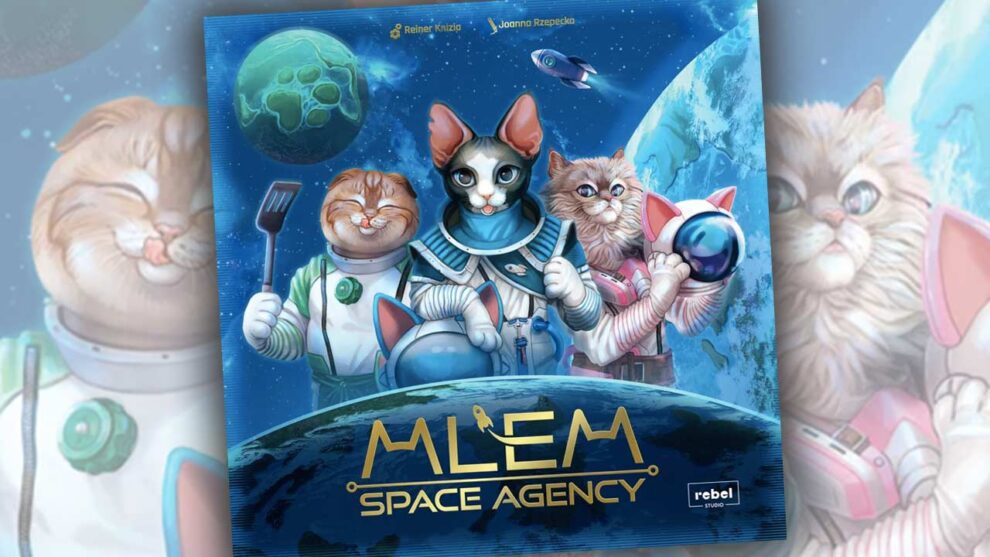



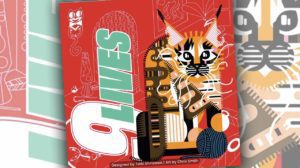





Add Comment